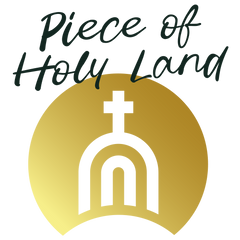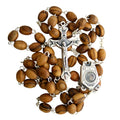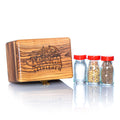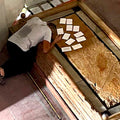Discover the Most Significant Christian Pilgrimage Sites in the Holy Land
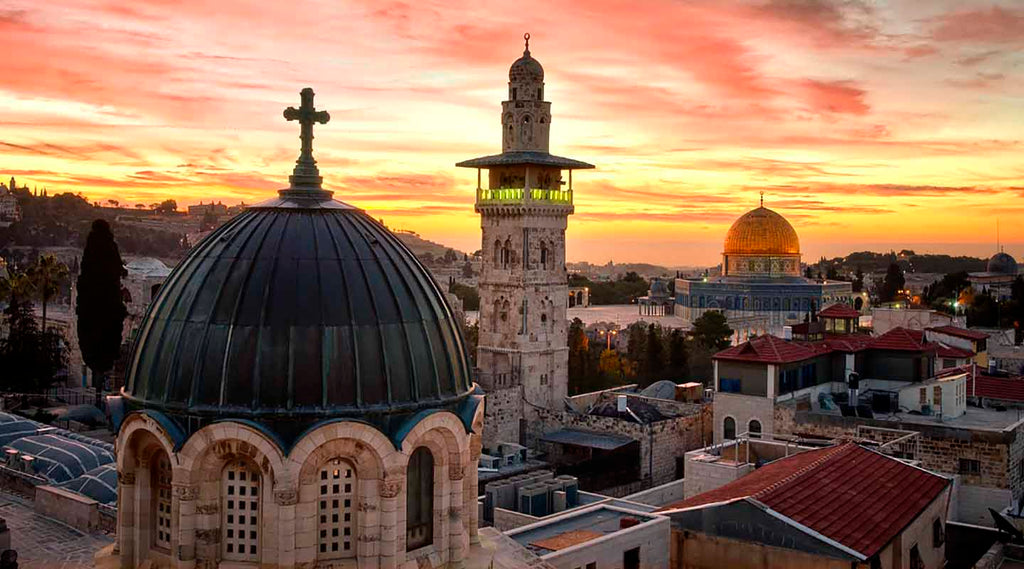
Where History and Spirituality Converge in the Holy Land
The Holy Land is a spiritual destination that offers believers a chance to connect deeply with the roots of their faith. It is home to many sites that hold profound religious and historical significance, drawing millions of pilgrims each year. Here are the top seven pilgrimage sites in the Holy Land and the spiritual meaning they hold, making each visit a deeply enriching experience.
Church of the Holy Sepulchre, Jerusalem
The Church of the Holy Sepulchre is among the most significant pilgrimage sites for Christians. Located in Jerusalem, it is believed to encompass both Golgotha, where Jesus was crucified, and the tomb from which He rose again. Built in the 4th century and revered by believers worldwide, the church offers a chance to pray at the Stone of Anointing and visit the Holy Tomb, where the miracle of the Resurrection is commemorated. Pilgrims often bring back Holy Land gifts such as olive wood crosses from Jerusalem, as tangible mementos of their spiritual journey.
Church of the Nativity, Bethlehem
In Bethlehem lies the Church of the Nativity, which marks the birthplace of Jesus Christ. Commissioned by Constantine and completed in the 4th century, the church houses the Grotto of the Nativity, where a silver star marks the spot where Jesus is believed to have been born. The church is a UNESCO World Heritage Site, drawing countless pilgrims who wish to celebrate the Nativity. Visitors often bring home rosaries from Bethlehem and other Christian souvenirs from the Holy Land, carved by local artisans from olive wood, connecting them to the profound event of Christ’s birth.
The Garden of Gethsemane, Jerusalem
The Garden of Gethsemane, situated at the base of the Mount of Olives, is known as the place where Jesus prayed fervently before His arrest. This peaceful garden, with its ancient olive trees, is a site for reflection and prayer. Pilgrims come to contemplate Jesus’s words, “Not my will, but yours be done,” which He spoke during His time of distress. Nearby stands the Church of All Nations, built over the rock where Jesus is believed to have prayed. Olive wood artifacts, such as a rosary from Bethlehem or an olive wood cross, are popular keepsakes that symbolize the strength and resilience witnessed in this sacred place.
The Jordan River
The Jordan River holds a special place in Christian tradition as the site of Jesus’s baptism by John the Baptist. This act marked the beginning of Jesus’s ministry and is a symbol of renewal and purification. Pilgrims visit the baptismal site, known as Yardenit, to renew their baptismal vows or experience a baptism in the same waters where Jesus was baptized. Bringing home holy water from the Jordan River serves as a reminder of spiritual rebirth and a deeper connection to the beginnings of Christ’s mission.
Mount of Beatitudes, Galilee
Overlooking the serene Sea of Galilee, the Mount of Beatitudes is believed to be where Jesus delivered the Sermon on the Mount, which includes the Beatitudes—a foundational set of teachings for Christian living. The Church of the Beatitudes, built on this spot, invites pilgrims to reflect on the teachings of Jesus, such as “Blessed are the peacemakers, for they shall be called children of God.” The site is perfect for quiet meditation, offering a view that connects the visitor to the message of compassion and humility that Christ preached.
Nazareth: Basilica of the Annunciation
Nazareth is where the angel Gabriel announced to Mary that she would bear the Son of God, making it a vital site for Christian pilgrims. The Basilica of the Annunciation stands over what is believed to be Mary’s home and the site of the Annunciation. This modern basilica is a place of great reverence, where pilgrims reflect on Mary’s acceptance of God’s will. Nazareth also offers visitors the chance to explore its ancient streets, which are filled with spiritual significance. Bringing back Christian souvenirs from the Holy Land, such as olive wood crosses or icons of the Annunciation, is a way to remember this special place.
Sea of Galilee
The Sea of Galilee is known as the setting for many of Jesus’s miracles, including walking on water and the miraculous catch of fish. It is a peaceful place where pilgrims can sail the waters and visit sites like Capernaum, where Jesus taught in the synagogue, and the Mount of Beatitudes. The Sea of Galilee represents a place of divine teaching and miracle-working, inviting believers to reflect on the power and compassion of Jesus. Many pilgrims take home olive wood rosaries or olive wood crosses from the nearby regions, connecting them to the life and teachings of Jesus.
Bringing the Holy Land Home
For those who cannot visit these sacred sites in person, owning Holy Land gifts such as olive wood crosses from Jerusalem, rosaries from Bethlehem, or a vial of holy water from the Jordan River offers a way to keep the Holy Land close to their hearts. These items serve as reminders of the profound experiences and the rich spiritual heritage that the Holy Land embodies. By incorporating these sacred items into daily prayers, believers can feel connected to the holy places and the deep-rooted traditions that continue to inspire faith and devotion.
Each of these pilgrimage sites offers a unique spiritual experience, allowing believers to walk in the footsteps of Jesus and connect with the sacred events of Christian history. Visiting these places is more than a journey across geography—it is a pilgrimage of the heart and soul, offering moments of reflection, renewal, and a deeper understanding of the Christian faith. For those who travel to these places or bring back a piece of the Holy Land, the experience is a testament to the enduring power of faith and the timeless story of salvation.
SHARE:

